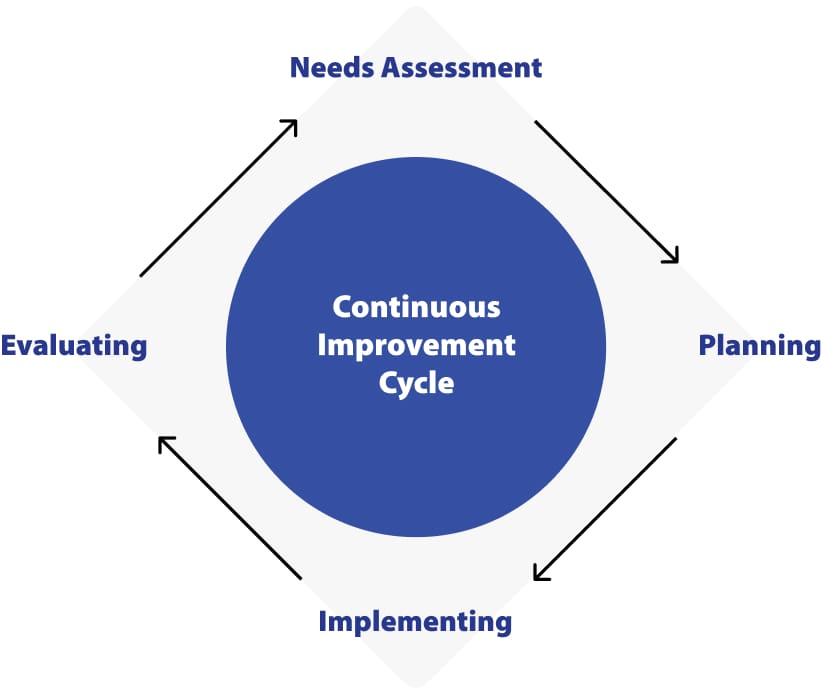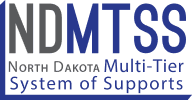WHY NDMTSS?
Impacts of NDMTSS
- Provides integrated whole child academic, social, emotional, behavioral, physical and environmental support for every learner.
- Offers early intervention for students who need additional support.
- Gives access to high-quality instructional materials backed by research.
- An integrated system involving all educators.
- Utilizes a data-based problem-solving process to drive continuous improvement.
- Promotes a positive culture and climate.
- Improves student outcomes using meaningful research.
- Builds capacity among all educators.
- Reduces the need for learning disabilities identification.

At its core, a Multi-Tiered System of Support is about asking the question, “Who needs what?” and then allocating our resources – our time, people, and money – in a systematic way to make that happen.
Leadership and Educator Buy-In and Support
Assessments can serve a number of purposes: screening, diagnostic, progress monitoring, and outcome evaluation.
-
Strong Tier 1 Core
Evidence-based practices for academic, social, emotional and behavioral support established for all students in preschool through graduation, providing a foundation of prevention. -
Universal Screening
Universal screening processes identify students who need additional support by measuring the fluency and accuracy of students’ critical early skills that are predictive of future skill attainment. -
Evidence-Based
Evidence-based interventions are implemented to provide a layered continuum of supports matched to each student’s needs. -
Progress Monitoring
Progress monitoring data are used continuously to determine student response to intervention and are essential to determine next steps for fading, exiting or intensifying interventions for students. -
Data-Based Decisions
NDMTSS supports a problem-solving process to guide decision-making at all levels of support.
- Inclusive of all students
- Uses evidence-based practices
- Effectiveness is based on both fidelity of the process and in the implementation of the instruction/intervention plan
- Applies to all tiers of instruction/intervention and at all levels
- Iterative process that may require multiple cycles to find solutions
*Adapted from NCTQ
NDMTSS is Continuous Improvement
Continuous improvement is not the responsibility of one or two educators working in isolation, but rather is a shared endeavor involving all stakeholders. Implementation is driven by district, school and student-level teams that are dependent upon a common purpose and collaboration. The NDMTSS process supports schools to identify their greatest needs, plan strategies for improvement, implement effective systems, and evaluate progress. Using individual student and school-wide data, districts set goals and monitor progress towards achieving them.
Continuous Improvement Cycle
- It helps to prevent academic and behavioral difficulties by providing early and timely support to students who are at risk.
- It helps to increase student engagement and motivation by providing feedback and goal setting.
- It helps to improve student outcomes and close achievement gaps by using evidence-based practices and data-driven decisions.
- It helps to differentiate instruction and intervention based on student’s strengths and needs.


